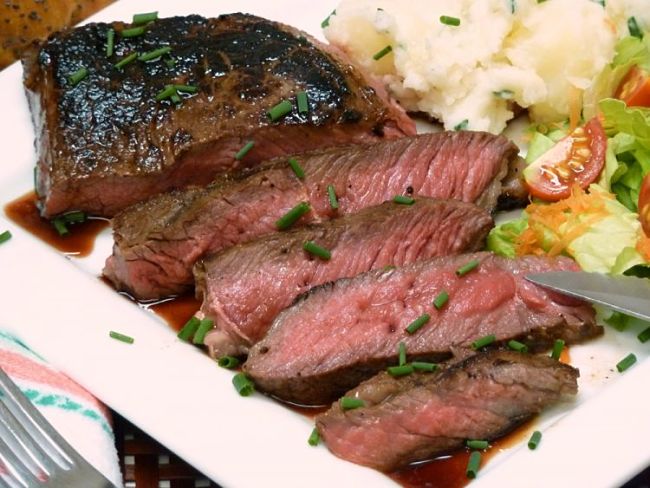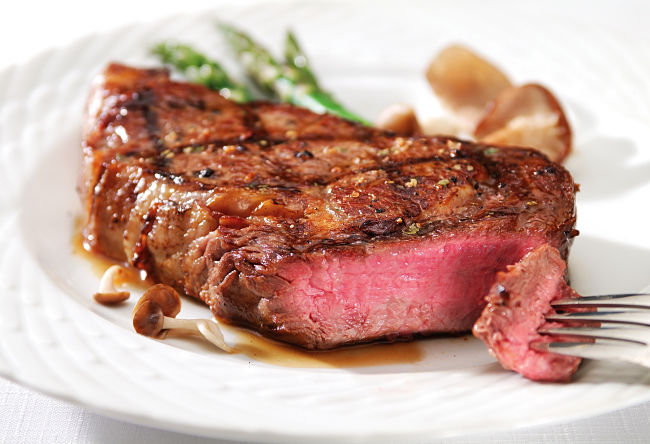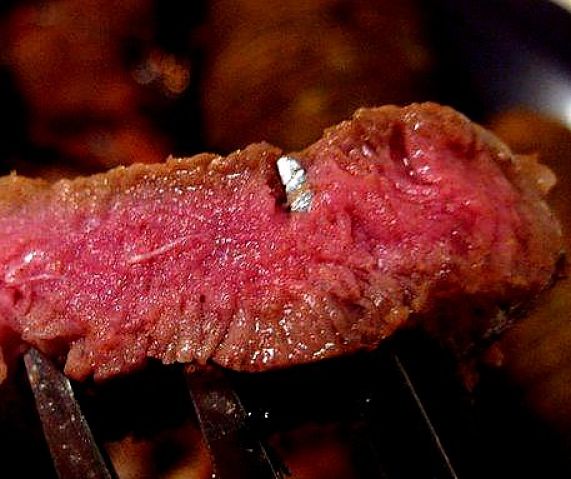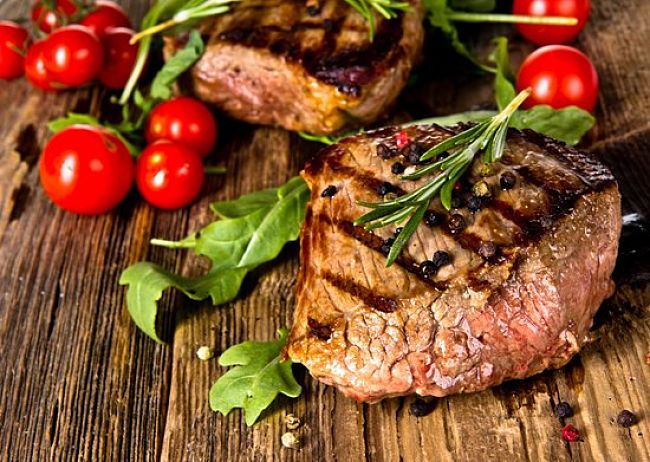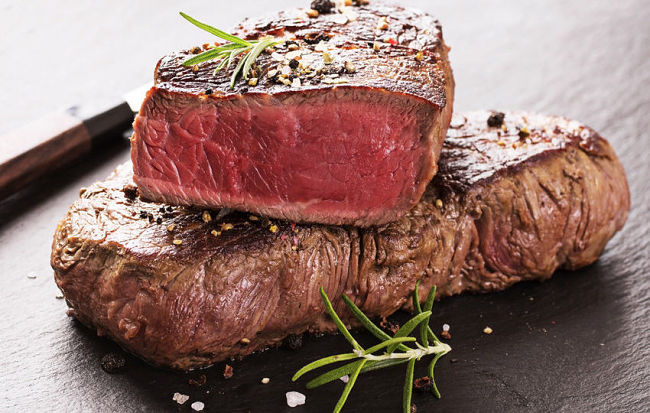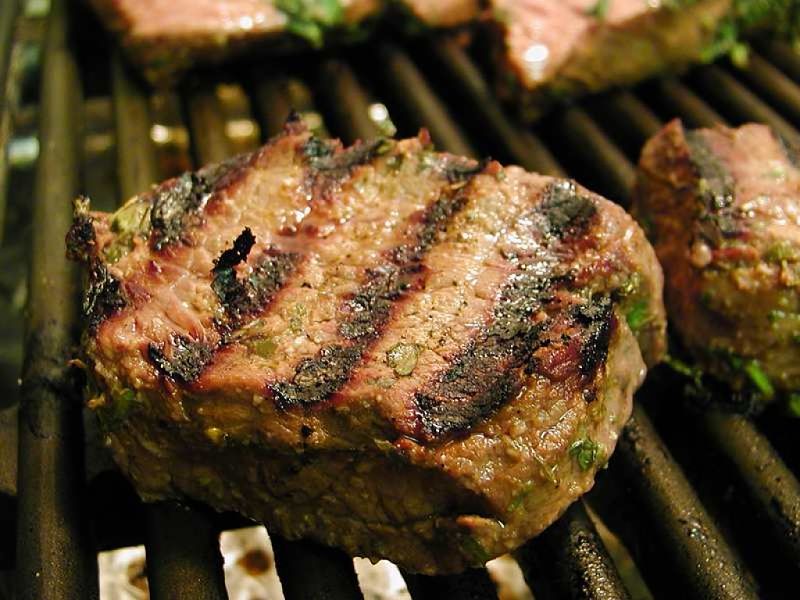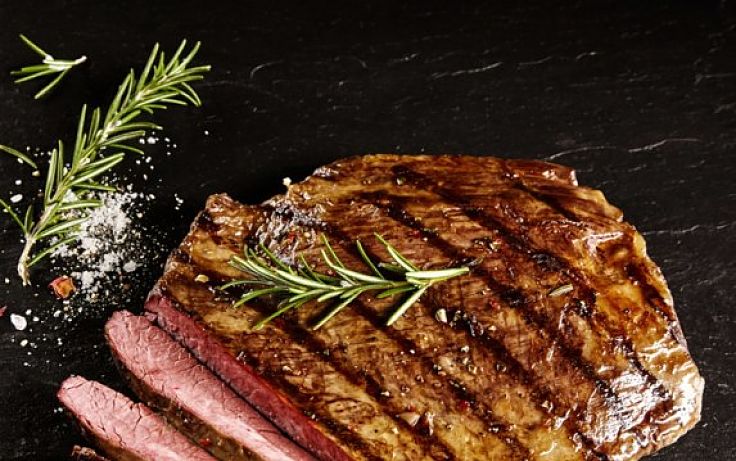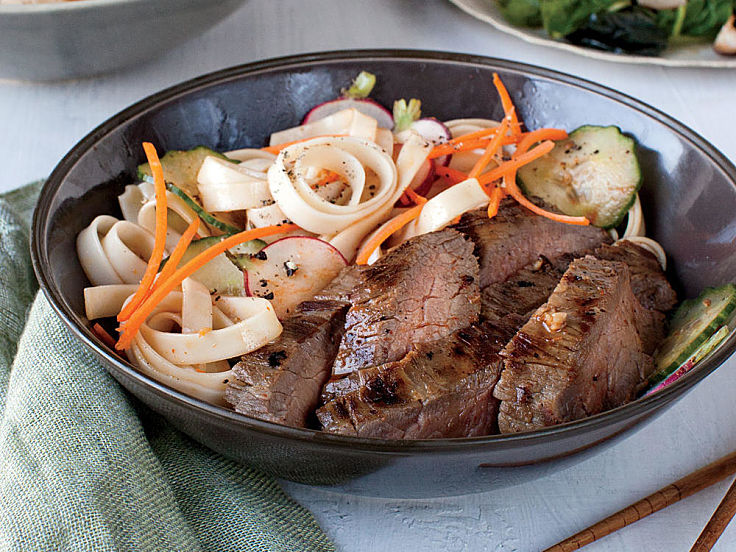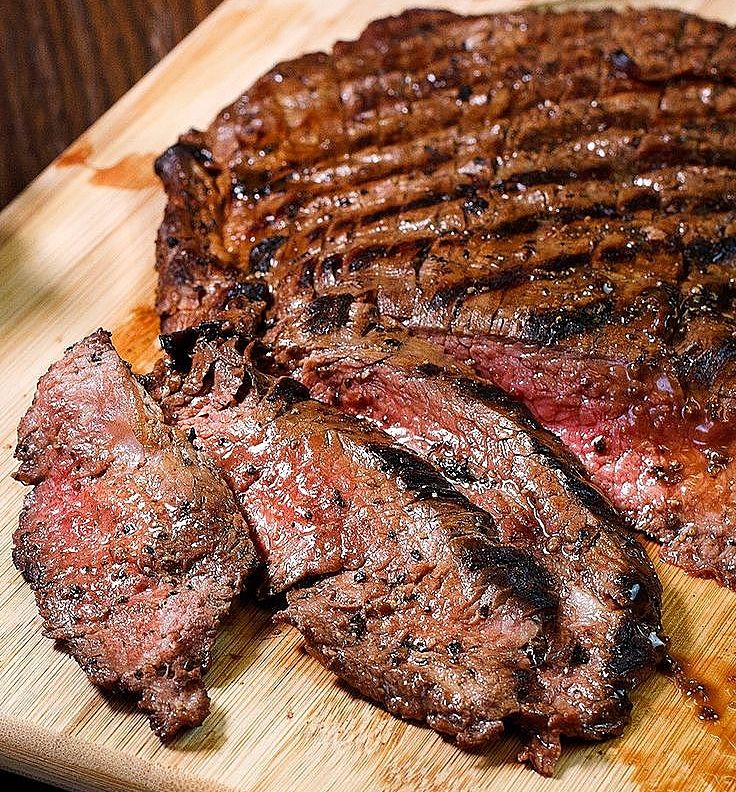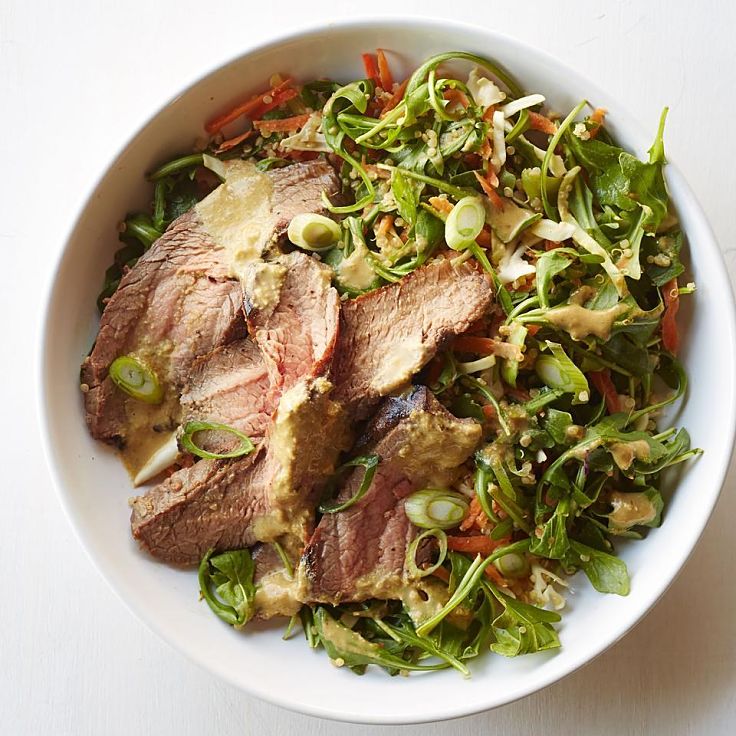Cook Tender Juicy Steak the Best Way - Pan Fried Seared Steaks
There are a lot of myths about the best way to cook the perfect steak that is tender and juicy that is seared to a dark brown color on the outside, but not burnt.
Forget about searing meat on high temperatures to seal in the juices - that is the number one myth and does not make sense. Searing is used to create flavor by browning not to somehow lock in the juices. Seared meat is not sealed. You can only retain moisture by cooking the meat quickly. The longer it is cooked the more moisture is lost.
Of course first rule for cooking tender juicy steaks is to buy good quality meat. Poor quality meat cannot yield tender juicy steak when cooked, no matter how you tenderise it.. Forget all the myths. Using a pan is better than a hot plate because you have more control overing the searing a cooking process.The keys to cooking the perfect steak are:
- Retain as much moisture as possible => juicy steak
- Don't overcook the steak = > tender steak, provide you have a good cut of meat
- Sear both surfaces of the steak to a dark brown colour => enhance the flavor by caramelising
- Prevent tainting the flavor by burning the steak or burning the oil => Use an oil with a high smoke point
- Cook the steak as quickly as possible by having the steaks at room temperature => Cold steak will burn on the outside before the inside is cooked. You need to remove the steak at just the right moment and not a second later.
Read on to discover how to cook the perfect tender and juicy steak by pan frying and searing.
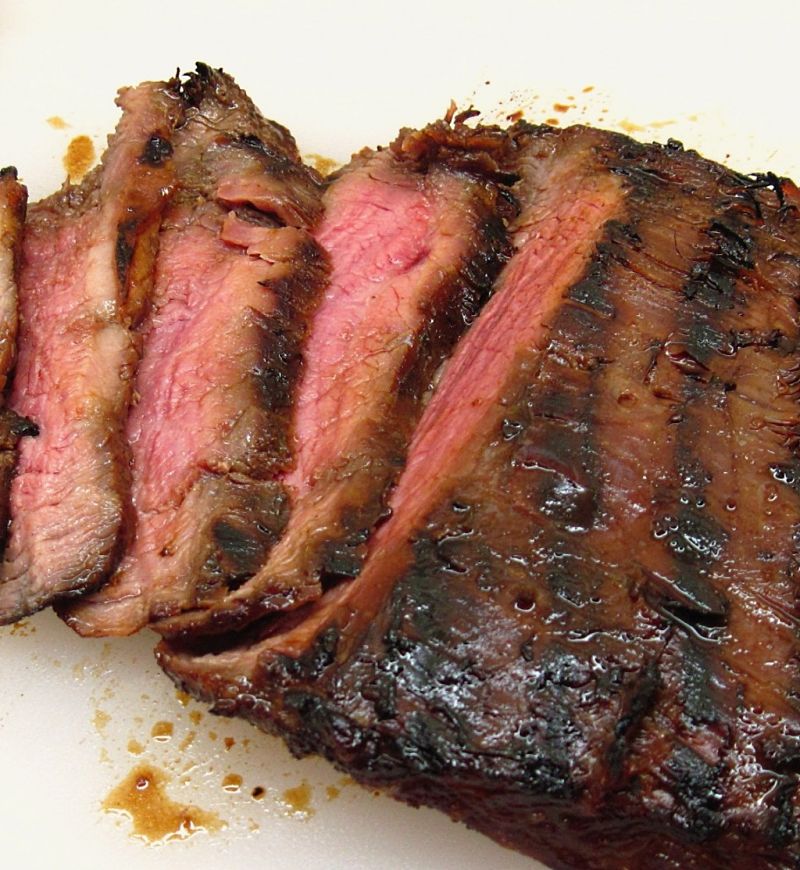
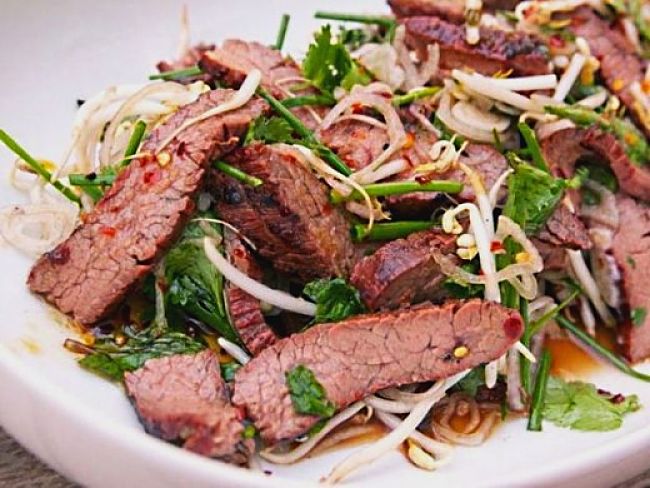
The Best Way to Cook Tender Juicy Steak
There is no magical searing cooking method that will seal in the juices. This is a myth. You don't need blast furnace high temperatures either as you can sear to brown and caramelise the outer surfaces of the meat on almost any surface. Steaks do not have pores or holes that can be sealed over. A seared surface will be almost as porous as an uncooked surface. Rather than sealing in the juices in the steak, searing actually does the opposite. It dries out the outer surface of the meat and removes juices (moisture) causing a loss of moisture rather than retaining it. As soon as you start to cook meat, it begins to lose moisture and this loss of moisture affects tenderness and juiciness. So cooking steak retain moisture is important and the answer is to cook it as quickly as possible!
Searing Is Important for Flavor
The reason why searing a steak is important is to caramelize ad brown the surface of the meat to create a flavorful exterior crust. This has the following desirable effects:
- Enhances the Texture Contrast - the crusty firm exterior versus the soft interior;
- Enhances the Appearance Contrast - the dark-brown exterior versus the pinkish-red interior;
- Enhances the Juiciness Contrast - the dry exterior surface versus the juicy interior;
- Enhances the Flavor Contrast - the taste of the caramelized exterior versus the pink beef taste of the interior;
So what is the ideal way to sear steak?
Don't be timid, but Don't Overdo It - You need to sear the meat to a dark brown, not light brown color - but not black or burnt. Do it in one go if you can and wait to get the right dark brown color before flipping. This will depend on your equipment and the temperature of the pan. You need a high temperature but no too high as you will burn the outer surface before the inside is cooked and then what can you do?
Proper Preparation and Greasing the Pan - You must have a good clean pan with a smooth surface that will allow for even contact between the pan and the meat. One big mistake is to use the wrong oil, even if added sparingly. Many people use safflower, olive, canola and sunflower oils but these have a low smoke point and burn or break down at searing temperatures, tainting the food. You need an oil with a high smoke point such as grape seed oil, peanut oil or rice bran oil. Canola, safflower and sunflower oils have moderate smoke points but stiil break down at high searing temperatures. Butter or olive oil have low smoke points and are unsuitable. Once the oil breaks down it produces smoke and bad flavors that can taint the meat.
Bring the Steak to Room Temperature - Do this quickly as you do not want the steak to deteriorate. The steak will cook better if its not straight from the refrigerator. Simply leave it out covered for 15-30 minutes.
Dry the Outside Surfaces of the Meat before Cooking - Marinades and tenderisers are a good idea, but you need to drain it off, rinse and dry the outer surface of the meat with a paper towel, and then rub with a tiny amount of oil before cooking in the pan. Any water or moisture is bad because as it steams off, the pan temperature will drop and the meat will lift above the pan until the water is gone. Meat will sear best when it is dry with a thin coating of oil. The other bad thing about leaving marinade on the meat is that it will burn and taint the food. The place for the marinade is inside the meat - not on the outer surface. A good sprinkle of salt ( coarse sea or kosher salt) and cracked black peppercorns or various powdered spices and herbs applied prior to grilling or during the grilling imparts flavor to the savory crust. But make sure these additions don't burn.
Preheating - This is very important. Turn the heat to very high and let the pan heat for 5-10 minutes until it is very hot and at the maximum temperature (depending on the type of pan and the heating capacity of the source). Heavy cast iron pans are best as they store heat in the metal, and won't drop their temperature as much when you add the steak (don't overload the pan). However heavier pans take a lot longer to heat up.
Searing the steak - Now you are ready to sear. Add the steaks one at a time to the hottest part of the pan. Cooking the steak to get a good, dark brown color on first side. Just lift a corner of the meat, not the whole piece. Once the meat is starting to brown nicely flip it to a clean and unused part of your pan surface to sear the other side. Cook the steak on the second side for the same amount of time as the first side.
Only Flipping the Steak Once - You need to follow this as an ideal not as a fundamental rule. Cooking once on each side is preferred but it really depends on how thin the meat is and the temperature of the pan. Many people ruin steaks by overcooking and burning on one side or end up eating steak which is too rare in the instead. For a standard high-quality cut of steak, you should flip at about four to five minutes for a steak done 'medium rare'. Lift a corner of the steak and examine the crust - it should be a crusty dark brown before you are ready to flip and cook the other side. Test for doneness before removing from the pan.
Turning the steak twice or many times will yield different results and many people claim that steak is more tender and juicier that way than only turning once. Turning many times can create a more even doneness throughout the meat, but with less thick outer crust. The 'turned once' steak has a nice crust, but when you cut it open you will often see that the outer margin of well done and the degree of doneness rapidly declines as you get further into the centre if the meat, and can be quite rare in the centre. Many people like their steak this way, but others want a more even doneness throughout. It all depends on temperature and timing, but turning more than once will give more evenness. Some people claim that cooking slowly and evenly is best and then searing at high temperature at the end to finish the steak. It really depends on your pan and the heat of your stove.
No matter whether you flip the steak once or more often, it is always best to use tongs to turn it rather than a fork, if you want a perfect steak. The time to puncture the steak is when you are eating it.
Testing for Doneness - There are various ways to test for doneness, and it depends on how rare you like your steak and how particular you are. The only truly accurate and reliable way to ensure consistent results is to use a meat thermometer, inserted right into the centre of the steak. For medium rare, remove the steak when the thermometer reaches about 125 degrees F (50 degrees Celsius). Remember that cooking continues while you are resting the steak for 5-10 minutes. Don't rely on the temperature - do some experiments to find the relationship between temperature and doneness.
Another good way to test for doneness is to use the "prod test." Press gently on the meat with your finger to feel how firm it is and how quickly the meat bounces into shape when you remove your finger. Rare meat feels soft and shows little 'bounce'. Medium-rare meats feel firmer and will bounce back quickly. Well done meat feels firm and has no give. Once again is is all a learning experience.
Remove the steak just before it is "done."- it will continue cooking while it is being rested and this prevents it being over-cooked when served.
Rest the steak - It is important to rest your steak rest briefly before serving it. This rest allows the steak to reabsorb and redistribute the juices in the as the muscle fibers relax and seems to increase both tenderness and juiciness. It also slowly completes the cooking process.
Cooking Very Thick Steaks - These can be very tricky to cook, especially the first few times. Thicker stakes take longer to cook, so they are usually cooked at a lower temperature for longer than thinner steaks. They may need to be turned more often. After creating an initial light brown crust on both sides complete cooking the steak at a slightly lower temperature.
